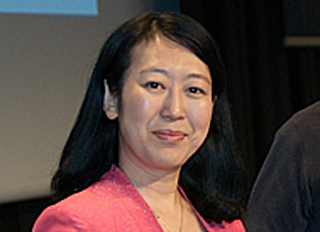In a conversation with Tom Wilkie from Scientific Computing World, the deputy designer of Tianhe-2 described of the benefits of peaceful and open international cooperation in using supercomputers for science.
Europe’s research scientists and system-level computer software engineers are welcome to use the world’s fastest supercomputer, the Tianhe-2, to pursue their research in collaboration with Chinese scientists and HPC specialists.
In an exclusive interview with Scientific Computing World, Professor Yutong Lu, the deputy chief designer of the Tianhe-2, said: “Europe has lots of application software experts and we would like to co-operate.” International collaboration was something China wanted to encourage because the machine was being used for open research work, she continued: “Computer science is a very general subject. I don’t think we should have secret work.”
She rejected out-of-hand US allegations that the computer was used for military applications, saying: “Our focus is basic science and technology research. Our university is very open.” As an example of international collaboration that could be encouraged, Professor Lu cited the Memorandum of Understanding signed between Britain and China on 27 May 2014, which allows one of the largest UK HPC research establishments, the Hartree Centre, access to the Tianhe-2.
Our university developed the system to support applications,” she said, so the university and Tianhe-2 welcomed collaboration from end-user application scientists but they were also interested in working with system-level computer scientists. Such cooperation can yield good results for all scientists, she continued, but in an oblique reference to the shadow of US Government policy towards Tianhe-2, she said that the first requirement “is to fully understand and trust each other.”
Professor Lu reiterated that “we are an open center”, but conceded that the university’s name, the National University of Defense Technology, could be a sensitive subject.
Warm words for Intel, despite US embargo
As reported on the Scientific Computing World website, Intel has been banned by the US Government from selling any more Xeon processors or Phi co-processors for use in the Tianhe-2 machine at the Guangzhou Supercomputer Centre in China, and from doing business with three other establishments in China. An official US Government statement alleges that “The Tianhe–1A and Tianhe–2 supercomputers are believed to be used in nuclear explosive activities.” These allegations were rejected by Professor Lu.
The impact of the embargo has gone much further than the widely reported ban on Intel supplying its hardware. It also involves cessation of support and cooperation at the intellectual level of computer science and technology development.
Professor Lu said that she was “frustrated” by the US embargo. Although it became public knowledge only earlier this year, the Chinese authorities found out about it when Intel stopped providing support services towards the end of September and beginning of October last year.
The Tianhe-2 had been having issues with the Phi co-processors supplied by Intel, she said. “We had many problems with the stability of Phi, because we used the first generation of the Phi processors,” she said. However, despite the embargo, she spoke warmly of the fruitful working relationship they had established with Intel: “We had close cooperation to upgrade and deal with these issues.” Then, she continued: Intel said “We have to stop now.”
Enough Ivy Bridge Xeon E5 2692 processors had already been delivered to allow the Tianhe-2 to be upgraded from its current 55 Petaflops peak performance to the 100 Petaflops mark. (Despite the near doubling in speed, the new version will have just 18,000 as opposed to the current 16,000 nodes.) However, the embargo has interrupted the supply of the Xeon Phi co-processors and thus put back by about a year the point at which the new performance will be attained.
Developing the China Accelerator
Professor Lu said that they had already upgraded the TH Express-2 interconnect network, concurrent with upgrading the nodes, so it would simply have been a matter of changing the cards when the Phi co-processors were delivered. With the embargo in place, however, “the situation has changed.”
The technologists within the National University of Defense Technology have therefore turned to a DSP chip that they developed themselves, and are adapting that to integrate it within the Tianhe as the Matrix 2000 GPDSP “China Accelerator.” The chip is 64 bit, 2.4 Teraflops (in double precision) running at 1 GHz with a power consumption of around 200W – roughly comparable to, or even a bit less than, the Intel Xeon Phi. (Although the speed of the machine is expected to nearly double, target peak power consumption will rise only from 17.8 MW to around 18 MW.)
The hardware change that has been forced upon them means that the machine’s designers also need to create new software libraries: a GPDSP operating system; a compiler; a driver; a maths library and a communications library. All sit under an OpenMP4.0 complier system.
At this point in time, it is not clear if the “China Accelerator” will be developed further into a commercially available co-processor. All Professor Lu would say was that such development would take a long time and that, for now, “it is a solution” to the problem with which the Chinese have been presented by the US embargo.
The signs are that the embargo has given fresh impetus to Chinese efforts to develop their own processors. However, the pathway is not yet clear. Professor Lu said: “The next step is hard to say. At NUDT we have the technologists that can do the research in processors. After the research is done, we will choose the technologies that we think are stable enough for supercomputers and other servers. For now it’s just an accelerator, but the next generation system will change the CPU to a domestic one.”
This story appears here as part of a cross-publishing agreement with Scientific Computing World.
Sign up for our insideHPC Newsletter.






